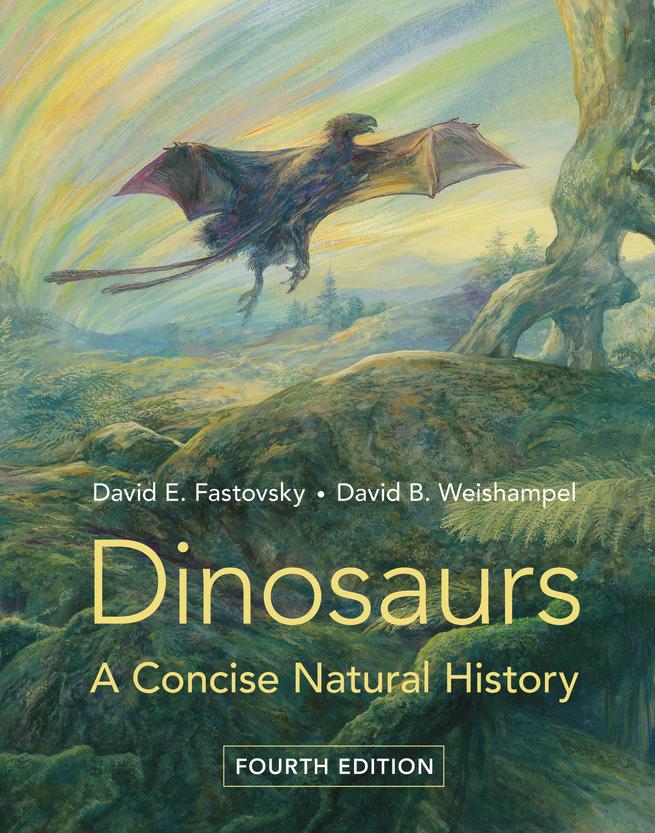
8 minute read
Life Science
Dinosaurs
A Concise Natural History Fourth edition
David E. Fastovsky
University of Rhode Island
David B. Weishampel John Sibbick
Description
The ideal textbook for non-science majors, this lively and engaging introduction encourages students to ask questions, assess data critically and think like a scientist. Building on the success of previous editions, Dinosaurs has been thoroughly updated to include new discoveries in the field, such as the toothed bird specimens found in China and recent discoveries of dinosaur soft anatomy. Illustrations by leading paleontological illustrator John Sibbick and new, carefully-chosen photographs, clearly show how dinosaurs looked, lived and their role in Earth history. Making science accessible and relevant through clear explanations and extensive illustrations, the text guides students through the dinosaur groups, emphasizing scientific concepts rather than presenting endless facts. Grounded in the common language of modern evolutionary biology – phylogenetic systematics – students learn to think about dinosaurs the way that professional paleontologists do.
Key Features
• Unlike other introductory books, Dinosaurs is not a list of facts and figures but instead is concept-based, encouraging students to consider dinosaurs as a series of scientific questions to be answered • Addresses the paleontology of dinosaurs exactly as the professionals in the field do, using phylogenetic systematic methods to reconstruct dinosaur relationships • Dinosaurs are brought to life in specially commissioned drawings from the acclaimed dinosaur illustrator, John Sibbick, which have been updated for this edition to include many of the newest discoveries in dinosaur paleobiology • High-resolution figures, topic question answers, all new lecture slides and a test bank available for instructors online • Spectacular, Mesozoic toothed bird discoveries in China are now included with specimen photographs provided by the scientists working on these organisms • Updated look at the history of the field engages with diversity and introduces an entire generation of young, game-changing paleontologists
Contents
Part I. Remembrance of Things Past: 1. To Catch a Dinosaur; 2. Dinosaur Days; 3. Who’s Related to Whom –and How Do We Know?; 4. Who Are the Dinosaurs?; 5. In The Beginning; Part II. Saurischia: Meat, Might, Muscle, and Magnitude: 6. Theropoda I: Nature Red In Tooth and Claw; 7. Theropoda II: Meet the Theropods; 8. Theropoda III: The Origin and Early Evolution of Birds; 9. Sauropodomorpha: The Big, the Bizarre, and the Majestic; Part III. Ornithischia: Armored, Horned, and Duck-Billed Dinosaurs: 10. Thyreophora: the Armor-bearers; 11. Marginocephalia: Bumps, Bosses, and Beaks; 12. Ornithopoda: Mighty Mesozoic Masticators; Part IV. Endothermy, Endemism, and Extinction: 13. The Paleobiology of Dinosaurs I; 14. The Paleobiology of Dinosaurs II; 15. The Flowering of the Mesozoic; 16. A History of Dinosaur Paleontology Through the Ideas of Dinosaur Paleontologists ; 17. The Cretaceous–Paleogene Extinction: The Frill is Gone; Glossary; Index of Subjects; Index of Genera.
Additional Resources: http://www.cambridge.org/9781108475945 High-resolution figures, topic question answers, lecture tutorials
Additional Information
Departments: Life Sciences, Geology, Earth Sciences, Environmental Sciences Level: undergraduate students, graduate students
July 2021 276 x 219 mm 534pp 366 colour illus. 3 tables 978-1-108-47594-5 Hardback £150.00 / US$195.00
The Evolution of Social Behaviour
Michael Taborsky
University of Bern
Michael A. Cant
University of Exeter Jan Komdeur
University of Groningen
Description
How can the stunning diversity of social systems and behaviours seen in nature be explained? Drawing on social evolution theory, experimental evidence and studies conducted in the field, this book outlines the fundamental principles of social evolution underlying this phenomenal richness.To succeed in the competition for resources, organisms may either ‘race’ to be quicker than others, ‘fight’ for privileged access, or ‘share’ their efforts and gains. The authors show how the ecology and intrinsic attributes of organisms select for each of these strategies, and how a handful of straightforward concepts explain the evolution of successful decision rules in behavioural interactions, whether among members of the same or different species. With a broad focus ranging from microorganisms to humans, this is the first book to provide students and researchers with a comprehensive account of the evolution of sociality by natural selection.
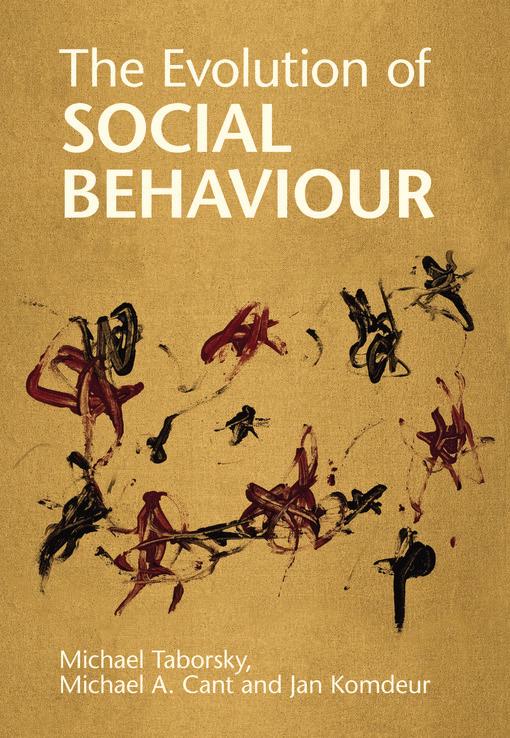
Key Features
• Provides the first comprehensive overview of the evolution of social behaviour, showing how the intriguing diversity of social systems can be explained with only a few essentials • Combines results from empirical and theoretical studies for an integrative insight into principles of social evolution • Spans the whole range of organisms and evolutionary principles, thereby enabling a comparative evaluation of sociality and its underlying mechanisms across biology
Contents
Preface; 1. Introduction; 2. Non-interference rivalry; 3. Conflict; 4. Cooperation; 5. Interspecific relations; 6. Synopsis; References; Subject index; Taxonomic index.
Additional Information
Level: Graduate students, academic researchers
August 2021 247 x 174 mm 438pp 978-1-107-01118-2 Hardback £84.99 / US$110.00
Understanding Development
Alessandro Minelli
University of Padua
Description
Developmental biology is seemingly well understood, with development widely accepted as being a series of programmed changes through which an egg turns into an adult organism, or a seed matures into a plant. However, the picture is much more complex than that: is it all genetically controlled or does environment have an influence? Is the final adult stage the target of development and everything else just a build-up to that point? Are developmental strategies the same in plants as in animals? How do we consider development in single-celled organisms? In this concise, engaging volume, Alessandro Minelli, a leading developmental biologist, addresses these key questions. Using familiar examples and easy-to-follow arguments, he offers fresh alternatives to a number of preconceptions and stereotypes, awakening the reader to the disparity of developmental phenomena across all main branches of the tree of life.
Key Features
• Introduces over forty-five key misunderstandings or unwarranted generalisations, followed by examples and short discussions, allowing the book to be read cover to cover or be dipped in and out of by readers • Includes examples from all main lineages in the tree of life, highlighting issues mostly ignored in books on developmental biology to date and offering opportunities for readers to revise concepts and formulate new questions • Covers the whole life cycle of an organism, including the post-embryonic phases as well as the embryonic phase of development, providing an emphasis on aspects at the cellular and organismic level and exposing the limitations of the current gene-centred view of development
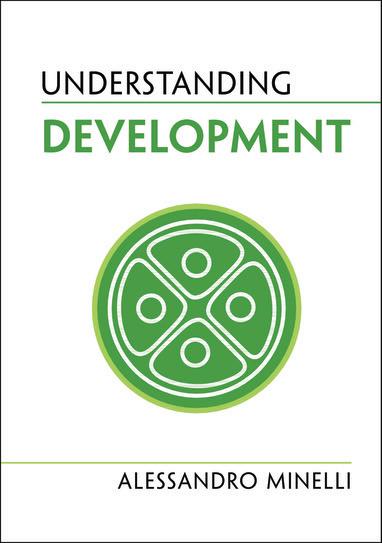
Contents
1. Defining development, If possible; 2. Cells and development; 3. Development as the history of the individual; 4. Revisiting the embryo; 5. Developmental sequences: sustainability vs adaptation; 6. Genes and development; 7. Emerging form; 8. The ecology of development; Concluding remarks.
Additional Information
Level: General readers, graduate students, academic researchers Series: Understanding Life
May 2021 178 x 127 mm 192pp 978-1-108-83677-7 Hardback £39.99 / US$49.99
Understanding DNA Ancestry
Sheldon Krimsky
Tufts University, Massachusetts
Description
DNA ancestry companies generate revenues in the region of $1bn a year, and the company 23andMe is said to have sold 10 million DNA ancestry kits to date. Although evidently popular, the science behind how DNA ancestry tests work is mystifying and difficult for the general public to interpret and understand. In this accessible and engaging book, Sheldon Krimsky, a leading researcher, investigates the methods that different companies use for DNA ancestry testing. He also discusses what the tests are used for, from their application in criminal investigations to discovering missing relatives. With a lack of transparency from companies in sharing their data, absent validation of methods by independent scientists, and currently no agreed-upon standards of accuracy, this book also examines the ethical issues behind genetic genealogy testing, including concerns surrounding data privacy and security. It demystifies the art and science of DNA ancestry testing for the general reader.
Key Features
• Deciphers for a general audience the science behind DNA ancestry tests, enabling readers to understand how these tests are conducted and how to assess their accuracy • Covers DNA sequencing, population genetics, ancestral information markers (AIMs), genetic variation, and forensic DNA applications of DNA ancestry information • Provides rich case studies on applications of DNA ancestry in criminal investigations, the discovery of missing relatives, false paternity, and personal identity, offering a holistic account of DNA ancestry for readers who want to understand its uses and misuses in our society, including concerns about protecting privacy • Investigates the commercial sides of DNA ancestry, including why ancestry companies have adopted health information in their testing
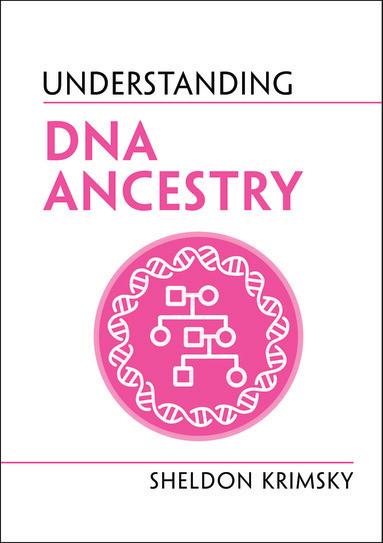
Contents
1. Introduction; 2. The business of DNA ancestry; 3. Geographical origins and movements of early human populations; 4. The science behind DNA ancestry testing; 5. Ancestry informative markers; 6. Ancestry DNA population reference panels; 7. Comparing a donor’s DNA to reference panel populations; 8. Probing your DNA; 9. Forensic applications of ancestry DNA results; 10. Privacy, personal identity and legal issues; 11. Discovering unknown, missing or mistaken relatives; 12. Accuracy, consistency and validation of DNA ancestry tests; 13. Conclusion.
Additional Information
Level: General readers, graduate students, academic researchers Series: Understanding Life
October 2021 178 x 127 mm c.150pp 978-1-108-84198-6 Hardback £34.99 / US$44.99
Understanding Evo-Devo
Wallace Arthur
National University of Ireland, Galway
Description
Why do the best-known examples of evolutionary change involve the alteration of one kind of animal into another very similar one, like the evolution of a bigger beak in a bird? Wouldn’t it be much more interesting to understand how beaks originated? Most people would agree, but until recently we didn’t know much about such origins. That is now changing, with the growth of the interdisciplinary field evo-devo, which deals with the relationship between how embryos develop in the short term and how they (and the adults they grow into) evolve in the long term. One of the key questions is: can the origins of structures such as beaks, eyes, and shells be explained within a Darwinian framework? The answer seems to be yes, but only by expanding that framework. This book discusses the required expansion, and the current state of play regarding our understanding of evolutionary and developmental origins.
Key Features
• Asks what evo-devo is, how it originated, and how it changes our views of the nature of the short-term process of embryonic and postembryonic development, and the long-term process of evolution • Emphasizes that neither evolution nor development can be fully understood without an appreciation of how each process interacts with the other
• Weaves together information from developmental biology, evolutionary biology, genetics and palaeontology • Gives readers a feel for what is known and what is not yet known about this important subject
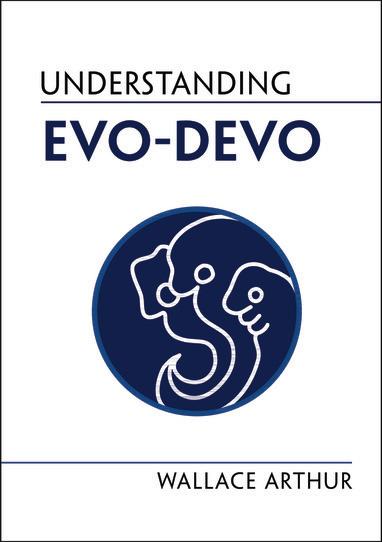
Contents
Preface; Acknowledgements; 1. What is evo-devo and why is it important?; 2. Antecedents of evo-devo; 3. Evolutionary and developmental essentials; 4. Evo-devo essentials; 5. The evolution of variations on a theme; 6. The evolutionary origins of themes and novelties; 7. The evolutionary origins of body plans; 8. Body plan features and toolkit genes; 9. Bringing it all together; Concluding remarks; Summary of common misunderstandings; References; Index.
Additional Information
Level: General readers, undergraduate students, academic researchers Series: Understanding Life
May 2021 178 x 127 mm 206pp 978-1-108-83693-7 Hardback £39.99 / US$49.99










